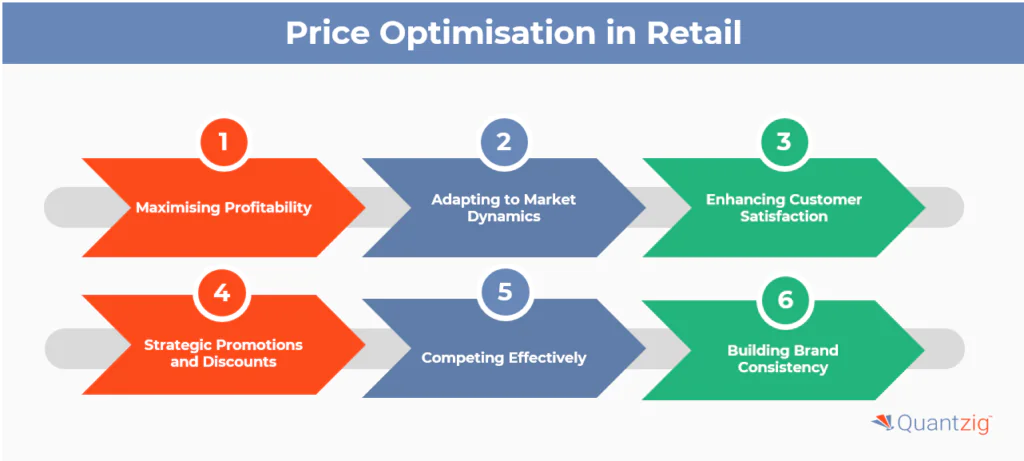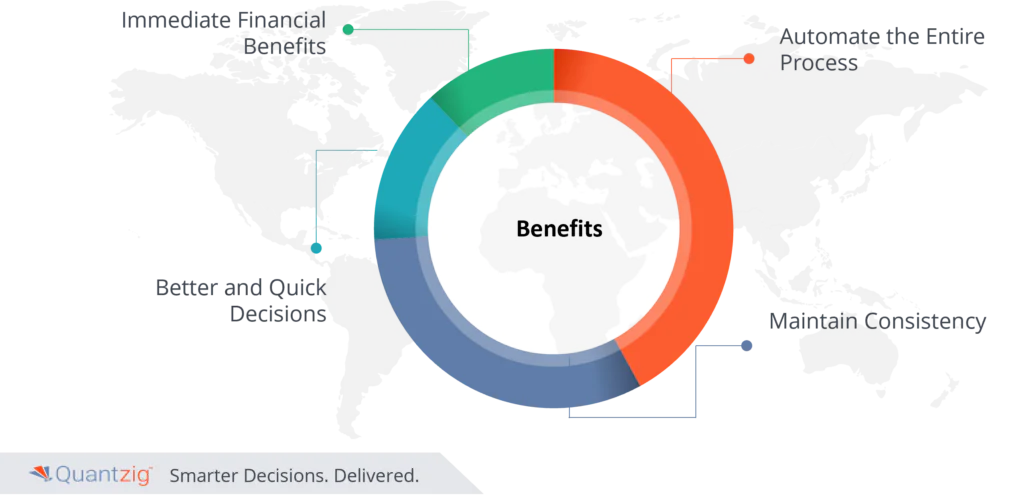Retail price optimization is one of the most crucial factors influencing the buying decisions of budget-conscious shoppers today. Customers often browse through multiple outlets—both physical and virtual—before making a purchase, especially if the price is on the higher side. However, the intense competition for the shoppers’ wallet does not leave much room for errors in your pricing strategy. For every stock-keeping unit (SKU) in the store, you need to strike that magical number to drive sales and profitability.
This approach plays a vital role for retailers aiming to make data-driven decisions. It helps regulate and control pricing decisions across every category and product type. By leveraging retail price optimization, identifying the ideal product price has evolved from relying on gut instincts and basic tools to using advanced systems driven by real retail pricing data.
Retail price management involves the use of demand modeling and ‘what-if’ analysis to estimate the impact of pricing on sales and performance, and then fixing a price that aligns with your business goals. Below, you’ll find a list of essential benefits that can be realized through the use of retail price optimization.
Book a demo to experience the meaningful insights we derive from data through our analytical tools and platform capabilities. Schedule a demo today!
Request a Free DemoTable of Contents
retail pricing optimization: An Overview

The Significance of Retail Price Management
In the competitive retail industry, retail price management is essential. These strategies are not just tactical tools but strategic imperatives that help businesses navigate market complexities, enhance profitability, and foster lasting customer satisfaction.
Maximizing Profitability:
It enables retailers to balance profitability and competitiveness by leveraging advanced analytics and real-time retail pricing data to find optimal price points.
Adapting to Market Dynamics:
Retail landscapes are dynamic. Retail price optimization allows retailers to adapt swiftly to changes like seasonal trends and competitor actions, ensuring a competitive edge.
Enhancing Customer Satisfaction:
Understanding the link between pricing and customer behavior is crucial. Price optimization aligns prices with customer expectations, boosting satisfaction, loyalty, and trust.
Strategic Promotions and Discounts:
Price optimization helps design effective promotional campaigns that drive sales and maximize revenue.
Building Brand Consistency:
Consistent pricing across all channels is vital for maintaining a strong and trustworthy brand image. Advanced pricing tools help ensure uniformity, reinforcing customer confidence and brand loyalty.
Altogether, a well-executed pricing strategy contributes to financial success, elevates the customer experience, and strengthens a brand’s position in the market enabling sustainable growth in today’s competitive retail environment.
Experience the advantages firsthand by testing a customized complimentary pilot designed to address your specific requirements. Pilot studies are non-committal in nature.
Request a free pilotBenefits of Price Optimization in retail pricing analytics
In the dynamic world of retail, where consumer behavior and market trends shift rapidly, adopting intelligent pricing strategies has become essential for businesses looking to grow and stay ahead. These approaches not only deliver immediate financial gains but also streamline operations, enable faster decision-making, and ensure consistency across pricing efforts. Let’s explore the wide-ranging benefits of implementing a data-driven pricing approach in the retail sector.

In the competitive retail landscape, where profit margins are often under pressure, price optimization serves as a financial catalyst. Businesses can fine-tune pricing strategies to achieve optimal profit margins without compromising on customer satisfaction. Moreover, by aligning prices with market demand and consumer preferences, retail establishments can experience a surge in conversions, translating into tangible revenue growth.
Retail price optimization offers several advantages, notably in its capacity to automate processes fully. Automation reduces manual intervention, minimizing errors and enhancing prediction accuracy. This seamless implementation of pricing adjustments across channels aligns with market trends, ensuring consistency and preventing discrepancies.
Furthermore, automation enables retailers to respond swiftly to market dynamics by leveraging real-time data and analytics. Adjustments based on demand fluctuations, competitor pricing, and inventory levels enhance competitiveness and capitalize on emerging opportunities.

Retail price optimization also serves as a valuable tool for understanding customer preferences, facilitating informed and quick pricing decisions. Insights derived from retail pricing data empower retailers to align pricing strategies with consumer expectations, enhancing satisfaction and loyalty. Consistency in pricing, supported by retail pricing analytics, fosters trust and reliability, particularly across multiple channels.
Dynamic pricing, guided by real-time data, ensures competitiveness, while balanced pricing architecture manages complexities such as affinity and cannibalization, ultimately optimizing retail strategies. Utilizing Machine Learning (ML) for price optimization goes beyond automation and speed, offering advantages such as handling vast product catalogs and optimizing prices across channels. ML considers various parameters and historical data to make nuanced decisions, surpassing human judgment. It anticipates trends early, crucial for dynamic markets, and balances exploration with exploitation, ensuring optimal pricing. ML also aids competitive strategies by monitoring competitors’ pricing and market changes, facilitating informed decision-making.
Get started with your complimentary trial today and delve into our platform without any obligations. Explore our wide range of customized, consumption driven analytical solutions services built across the analytical maturity levels.
Start your free trialConclusion
In conclusion, the adoption of price optimization in retail is not merely a strategic choice; it’s a necessity in a competitive market where pricing intricacies can significantly impact a business’s bottom line. The multifaceted benefits of immediate financial gains, process automation, informed decision-making, and pricing consistency position price optimization as a transformative force in the retail sector, empowering businesses to navigate challenges and thrive in the ever-evolving retail landscape.



